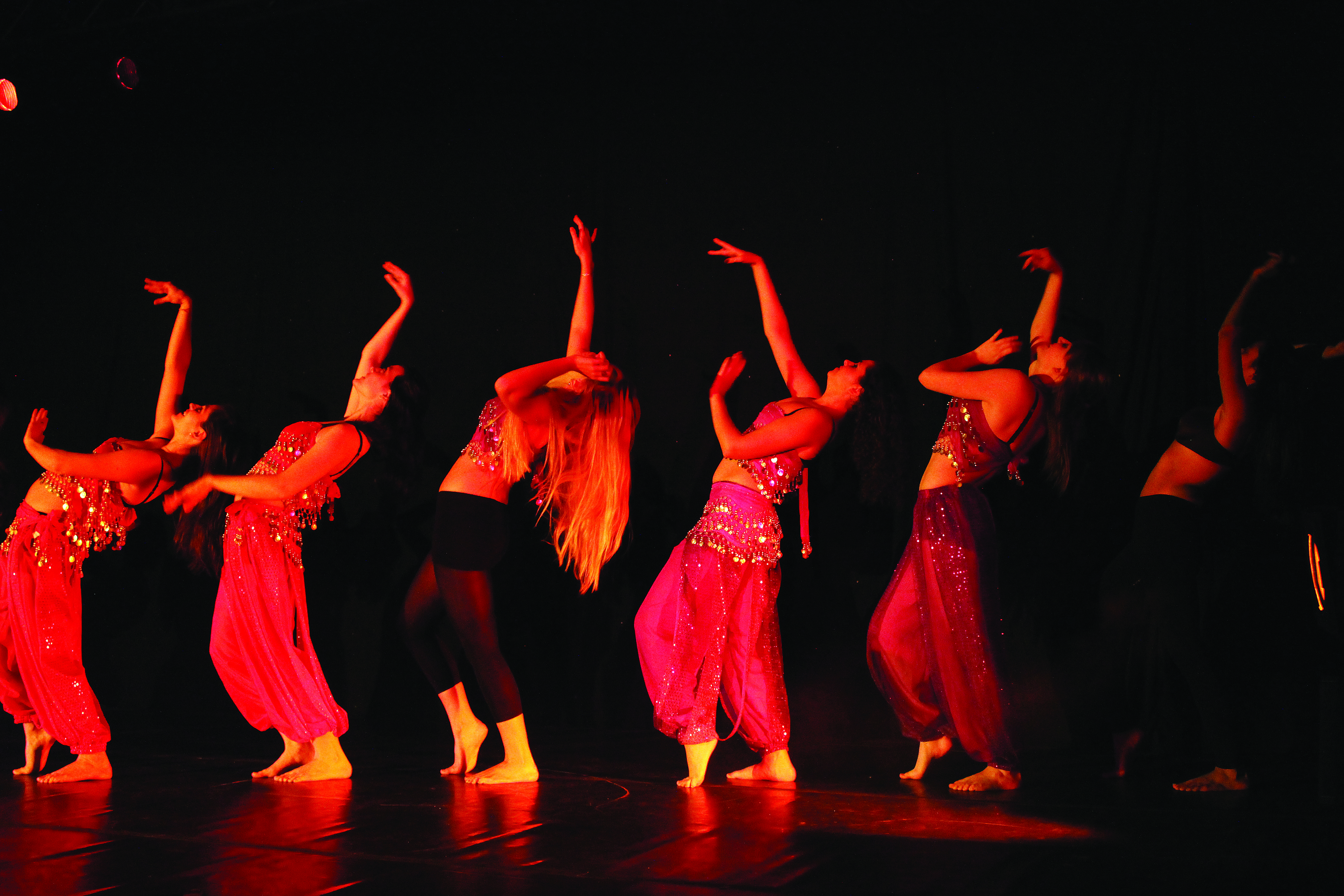On Friday, Nov. 22 in the 1962 room of Cro, the Connecticut College Asian Student Association (CCASA) presented this year’s Fusion show, a dance performance celebrating traditional dances from Asia. The performance was sold out, with an insane entrance line that wrapped as far as the front door.
On a stage against a starry background, with colorful spotlights and colorful clothing for many of the dances, 11 different groups of choreographers and dancers performed traditional Chinese dances, K-pop (Korean pop music), J-pop (Japanese pop music), a Bollywood-influenced dance, a belly dance inspired by both Egyptian and tribal belly dancing, Bhangra, “a lively form of music and dance from the Punjab region in South Asia,” according to choreographer Dagna Bilski; and a fashion show sampling just some of the styles and traditional attire from several of the East Asian countries that CCASA represents at Conn.
This year, the proceeds from the show will go to an organization called Liberty in North Korea (LiNK), which works to protect the human rights of the North Korean people. Before the show, Lizz Ocampo ’16 and Erik Wu-Leung ’16 spoke to the crowd about Conn’s chapter of LiNK and thanked attendees for their support.
The show proper was split into two acts, the first of which began with Thousand Hands. From China, The Thousand Hands Dance is based on the legend of the Buddhist goddess of mercy, Guan Shi Yin. The many hands (there were 28 total in this production) represent the goddess’s selflessness and compassion. Umbrellas, also from China, followed. It’s a “happy dance,” of “empowered quiet grace,” according to its choreographer, Louise Brownsberger ’16. A dance based on K-pop came next. This genre is influenced by a blend of Japanese and American pop music, as well as a style of Korean folk music called trot. Following was a ribbon dance from China, accompanied by “The Warbling Birds” by Hong Ting.
Next, the audience was transported to India through a Bollywood-influenced dance. The dance was infectiously upbeat, especially as it was performed alongside Iggy Azealia’s “Bounce,” and Sunidhi Chauhab and Vishal Dadlani’s “Sheila Ki Jawani.” In the middle of the piece, it morphed into Thousand Hands, and then left that inspiration for the end.
Act II started with a belly dance influenced by Egyptian and tribal belly dancing. This was a mix of really upbeat dancing – bolstered by “El Wad Da Men ((Lalalalalalala))” by Khaled Zaki! – with slower, serpentine dancing influenced more by the tribal style (this time backed with Beats Antique’s “Battle” and “Egyptic”).
A fashion show followed, exhibiting clothing from China, Japan, India, Korea and other Southeast Asian countries. Another K-pop number came next, alternately “slow and seductive” and “intense and aggressive,” said choreographer Chelsea Adams ’15. “Rum Pum Pum Pum,” by the K-pop girl group f(x) accompanied the dancers.
The next group of dancers performed a lively dance influenced by Bhangra music and dance from the Punjab region of South Asia, which includes parts of eastern Pakistan and northern India. Accompanying it were the Punjabi song “Viah di Raat” by Dj Aj, “Ghangra” by Gupsy Aujla, featuring Saini Surinder; “Bhangra Ishque Da” by Balwinder Matewaria and “Sida Sada” by Gupsy Aujila and Saini Surinder, featuring Raxtar. The dance and music made for an upbeat and fun combination.
For the last two dances, the dancers returned to eastern Asia: China and Japan. A beautiful water sleeve dance was first, where the dancers wore greatly extended sleeves that went well beyond their arms. The piece was elegant and fluid. Another Hong Ting song, “Lotus Out of Water,” placed the dancers – and the audience – in a wonderful backdrop for the dance.
An upbeat J-pop dance—“inspired by the boy bands and girl bands of Japan,” according to choreographer Miles Keeney—ended the show. Three incredibly catchy songs – “Galaxy Supernova” and “The Boys *Bring the Boys* Teddy Riley Remix” by Girls Generation, and “Splash” by Da iCE played along with the dancers. To describe this dance, “perky” is a definite understatement.
The show was a blast to watch because the dancers were exuberant. It was so obvious that they were just letting go and living in the moment. It was also “impressive that there were so many ‘non-dancers’ performing,” Helen Rolfe ’16 noted after the show. Dance major, minor, or neither, everybody had infectious energy that made me want to get up and move, despite the tables-and-chairs setup. Still, the clustered round tables made the experience feel more intimate than it would have felt had the room been set up in auditorium-style seating. The show left its audience buoyant and over-stimulated. I’d say it was a success.









